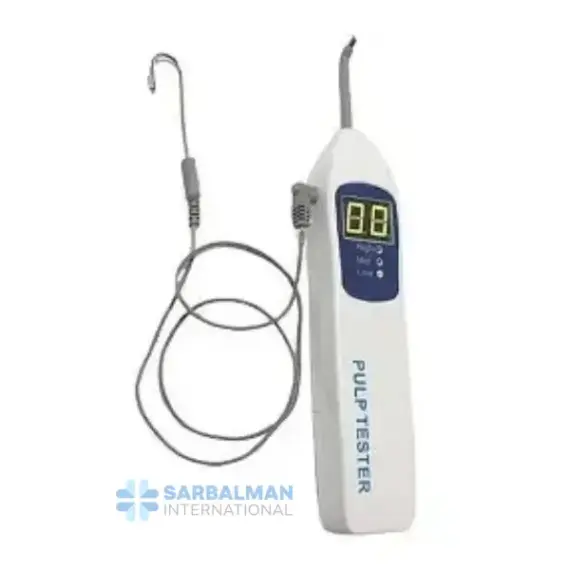Pulp Tester
Free!
The pulp tester is a handheld dental device that delivers a gentle, controlled electrical stimulus to check tooth nerve vitality. It provides stepwise output, digital feedback, and audible cues, helping clinicians quickly differentiate vital from non-vital teeth. Use it for endodontic diagnosis, trauma follow-up, and pre-restorative assessments. Reliable, comfortable, and simple to use, it supports faster clinical decisions and clearer treatment planning.
Description
A pulp tester is a small, handheld diagnostic device used by dentists to assess the vitality of a tooth’s pulp. It delivers a controlled, painless electrical stimulus to the enamel. If the nerve responds at a certain threshold, the tooth is likely vital; a lack of response may indicate pulpal degeneration or necrosis. This quick, chairside test helps clinicians decide between monitoring, endodontic treatment, or other restorative options.
Key features and benefits
• Digital display with stepwise output for precise, repeatable readings
• Multiple sensitivity modes so you can test anterior and posterior teeth with confidence
• Ergonomic, lightweight handpiece that reduces operator fatigue during busy clinics
• Smooth, gradual ramp-up of stimulus to maintain patient comfort and minimize startle response
• Audible and visual indicators to confirm contact and response
• Convenient power controls and auto-standby to extend battery life
• Replaceable probe tips and detachable lead for easy hygiene maintenance
Typical uses and applications
• Endodontic diagnosis to differentiate between reversible and irreversible pulpitis
• Evaluating trauma cases to monitor vitality over time
• Pre-operative assessment before crowns, onlays, or extensive restorations
• Comparing responses with contralateral or adjacent teeth to establish baselines
• Documentation of vitality status during recall appointments
How it compares
Unlike thermal tests, which can be technique-sensitive and inconsistent, an electric pulp tester provides a more standardized, quantifiable stimulus. It complements, not replaces, other diagnostics such as percussion, palpation, and radiographs. For complex cases, combining methods increases confidence in the treatment plan.
Care and use tips
Apply a small dab of conductive medium on the probe and test on clean enamel, avoiding metallic restorations. Always compare readings with a control tooth and record the response level rather than using a simple yes/no result. Follow standard infection-prevention protocols for cleaning the handpiece and accessories according to local guidelines.




